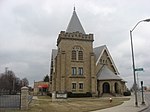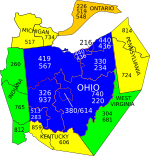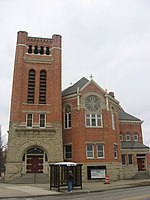Toledo Museum of Art

The Toledo Museum of Art is an internationally known art museum located in the Old West End neighborhood of Toledo, Ohio. It houses a collection of more than 30,000 objects. With 45 galleries, it covers 280,000 square feet and is currently in the midst of a massive multiyear expansion plan to its 40-acre campus. The museum was founded by Toledo glassmaker Edward Drummond Libbey in 1901, and moved to its current location, a Greek revival building designed by Edward B. Green and Harry W. Wachter, in 1912. The main building was expanded twice, in the 1920s and 1930s. Other buildings were added in the 1990s and 2006. The museum's main building consists of 4 1/2 acres of floor space on two levels. Features include fifteen classroom studios, a 1,750-seat Peristyle concert hall, a 176-seat lecture hall, a café and gift shop. The museum averages some 380,000 visitors per year and, in 2010, was voted America's favorite museum by the readers of the visual arts website Modern Art Notes.The Toledo Museum of Art's eleventh and current director is Adam M. Levine.
Excerpt from the Wikipedia article Toledo Museum of Art (License: CC BY-SA 3.0, Authors, Images).Toledo Museum of Art
I 75, Toledo
Geographical coordinates (GPS) Address Nearby Places Show on map
Geographical coordinates (GPS)
| Latitude | Longitude |
|---|---|
| N 41.656944444444 ° | E -83.559444444444 ° |
Address
I 75
43610 Toledo
Ohio, United States
Open on Google Maps









